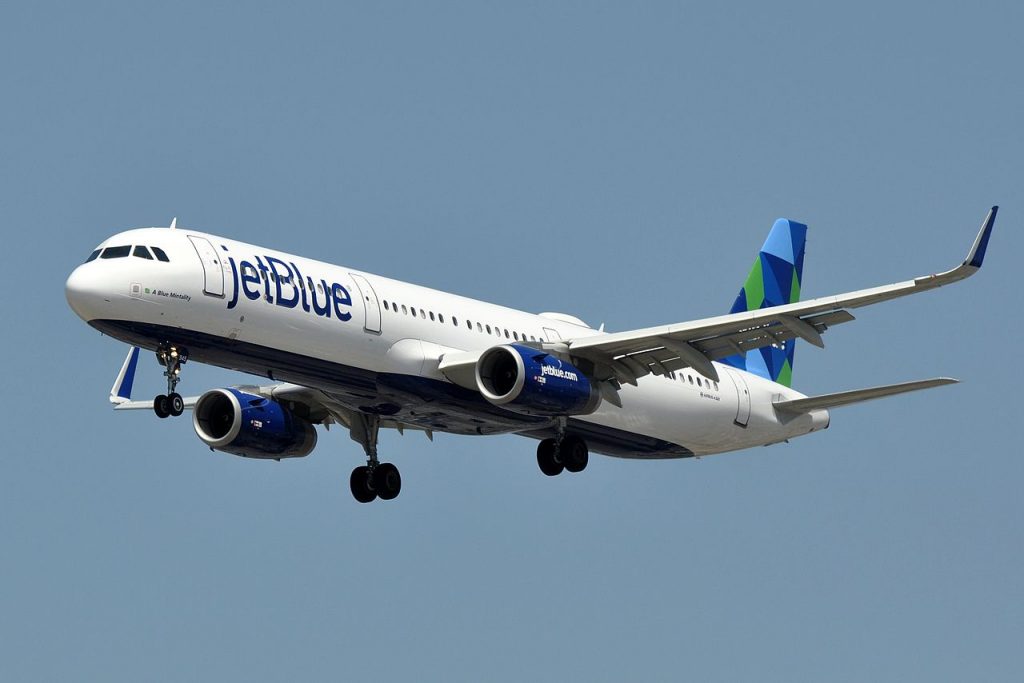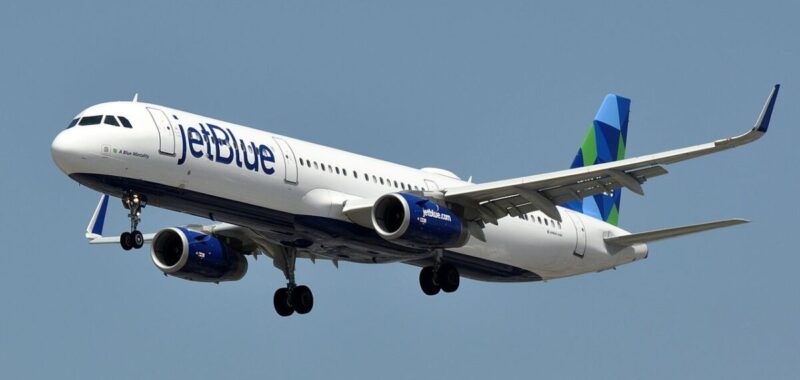
Skift Take
JetBlueâs strategy of cutting unprofitable routes and focusing on its core markets is starting to see returns â the carrier unexpectedly reported a profit in the second quarter.
JetBlue posted a surprise quarterly profit of $25 million as it seeks to revamp its strategy following the collapse of its merger with Spirit Airlines.
The carrierâs profit in the second quarter was down 82% compared to last year, but Wall Street analysts were expecting a loss.
JetBlueâs strategy, now branded as JetForward, focuses on improving the carrierâs operational reliability, bolstering its leisure network in the East Coast, tailoring its product offerings and cutting costs. Executives said it expects the strategy to add between $800 million and $900 million in pre-tax profit in 2027.
In recent months, the carrier has also cut dozens of unprofitable routes. So far, JetBlue has scrapped more than 50 routes, president Marty St. George said in a call with analysts on Tuesday.
St. George said the new strategy gave JetBlue an additional $100 million in revenue for the second quarter.
The airline also announced that it would defer $3 billion in aircraft spending until 2029 to improve its cash flow. It is also deferring the delivery of 44 Airbus A321neo until at least 2030 partly due to Pratt and Whitney engine issues grounding dozens of aircraft.
âAt this stage, we simply can’t afford to continue taking delivery of costly new aircraft that may need to be parked due to engine availability issues, especially if we must raise financing to support these deliveries,â chief financial officer Ursula Hurley said on the call.
CEO Joanna Geraghty cautioned that engine issues could make it more difficult for JetBlue to achieve profitability.
âIn order to be profitable in this uncertain environment, we must transform our cost base in an aggressive manner, similar to the approach we’ve taken with our network changes,â Geraghty said.
JetBlue Leans Into Leisure Travel
JetBlue is shifting capacity from its corporate routes in New York to leisure ones.
St. George said JetBlue would continue to fly corporate customers, but the route adjustments better reflected the slower recovery of business travel out of New York.
âThere’s no walking away from the corporate market,â St. George said.
Geraghty has previously described cities like New York and Boston, along with regions like the Caribbean, as âbread-and-butterâ areas that could help JetBlueâs profitability.
Her predecessor, Robin Hayes, pushed for JetBlue to compete more directly with legacy carriers. One of the hallmarks of Hayesâ tenure was launching routes to Europe, for example. JetBlue recently slashed its winter schedule to London and Paris.
A Major Win for Geraghty
With JetBlueâs unexpected second-quarter profit, Geraghtyâs strategy seems to be paying off.
Under her leadership, JetBlue peeled back its ambitions to be a direct competitor to the legacies and instead has focused on what Geraghty describes as âbusiness fundamentals.â
JetBlue had been struggling to report a profit in recent years and its future as a standalone airline was unclear once a federal judge blocked its merger with Spirit Airlines. A different federal judge blocked the carrierâs partnership with American Airlines, known as the Northeast Alliance.
Geraghty called the Northeast Alliance and the Spirit merger âdistractionsâ at an industry event in March.
She also faced activist investor Carl Icahn, who disclosed a 9.1% stake in the company just days after she became CEO. Icahn won two seats on JetBlueâs board. So far, Icahn hasnât pushed for any major changes publicly.
Airlines Sector Stock Index Performance Year-to-Date
What am I looking at? The performance of airline sector stocks within the ST200. The index includes companies publicly traded across global markets including network carriers, low-cost carriers, and other related companies.
The Skift Travel 200 (ST200) combines the financial performance of nearly 200 travel companies worth more than a trillion dollars into a single number. See more airlines sector financial performance.
Read the full methodology behind the Skift Travel 200.

